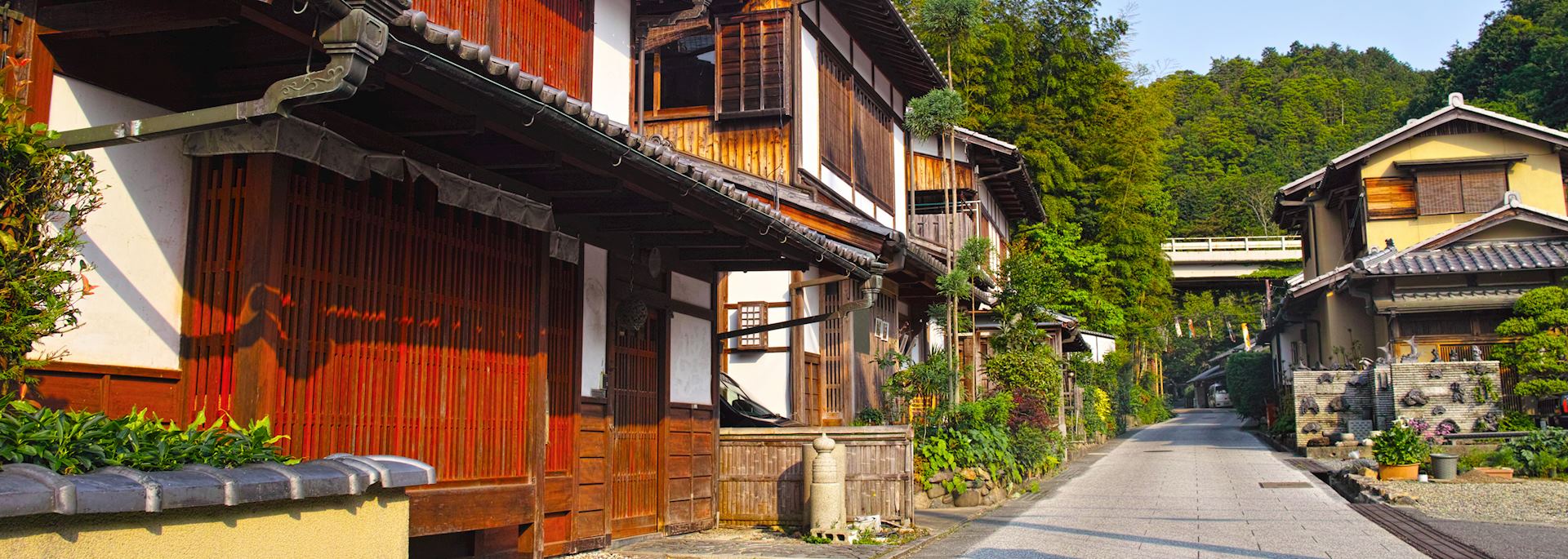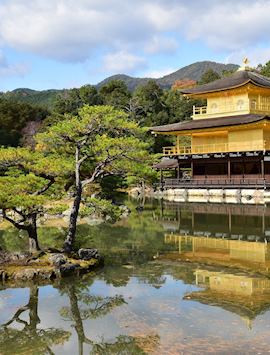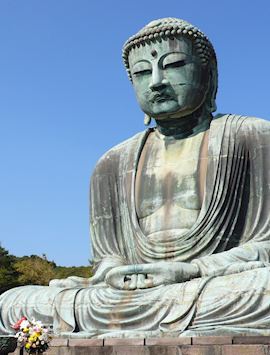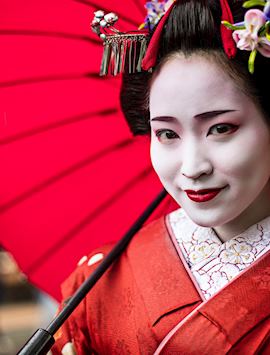By Japan specialist Clio
When choosing where to stay in Japan, by and large, you have two options: hotels modeled in glass and concrete, or tiny, family-owned guesthouses called ryokan. But, visit Kyoto, and there’s a third way.
Machiya are to Kyoto what red-brick Victorian mansions are to London or brownstones are to Brooklyn. These traditional, multi-story townhouses were owned by merchants and craftsmen, who passed them down the generations. Many are now available to stay in as your own private home in the city, giving you the opportunity to try Japanese living for a few days.
Built from dark, fire-treated hinoki wood, the latticework frontages of machiya once lined almost every street in Kyoto. The 10th-century Heian-period design filtered through to cities across the country, but most were destroyed during World War II.
Kyoto escaped thanks to an American army general, Henry Stimson. The city fell under his protection during the conflict, and he deemed bombing it cultural sacrilege.
The buildings are designed to cope with Kyoto’s hot summers and cool winters, using layers of shĹŤji (sliding doors) to moderate the temperature. The front of the townhouse originally served as a showroom for prospective clients. Over time, these rooms have been converted into living spaces.
Most of Kyoto’s machiya are about 90 to 130 years old. With no parking, high tax demands and ever-increasing fuel bills, they can be impractical for modern families, who often offer up their ancestral home as a self-catering place to stay.
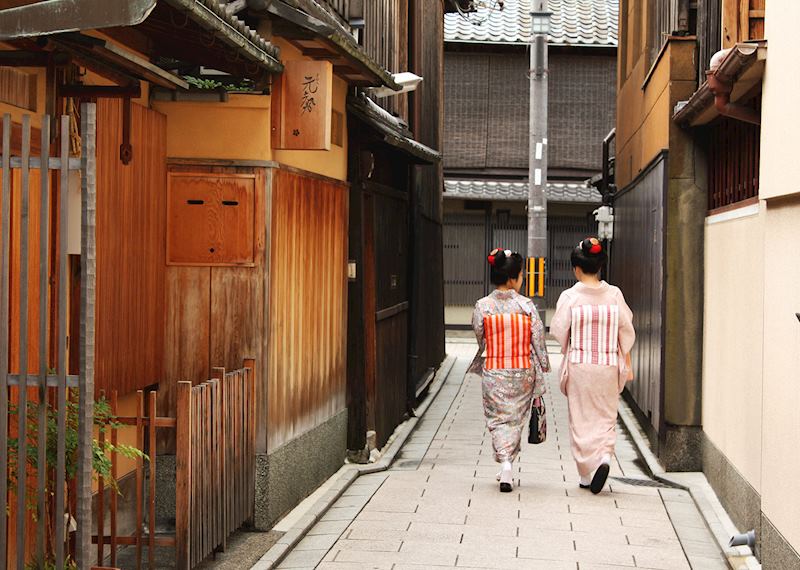
Why stay in a machiya?
Firstly, because you’ll join a little Japanese community. It’s not unknown for the family next door to pop round and say hello (often armed with sweets). On one particularly rainy morning, I was greeted by a local resident running across to hand me a spare umbrella.
Machiya tend to stand a couple of streets back from the main hotels, leading you into a part of the city you’d otherwise miss. This is your own little private slice of Kyoto. After a day’s exploration, you can come home to your machiya, sit down with a cup of sake and look out over your rock garden.
While I’d recommend a machiya even if it’s just one or two of you, they really come into their own for families or groups of friends. Most sleep six to eight people comfortably, making them excellent value, and have plenty of communal space.
What are machiya like inside?
While all machiya have typical tatami mat flooring, sliding doors and a penchant for minimalist design, they range from the ultra-traditional to the more modern.
Separate dining and living areas usually surround a tsuboniwa (courtyard garden). More traditional designs incorporate floor seating, low tables and, often, a small tea ceremony room.
Japanese bedrooms are multi-functioning, sometimes with a low table and cushions for daytime relaxation, and fold-out futons for night-time.
While I’m a fan of futons, they’re a little too firm for some people (although Japanese friends rave about their health benefits). Some machiya have Western-style bedrooms instead, but I suggest choosing one that offers the Japanese style as well, giving you the chance to compare and contrast.
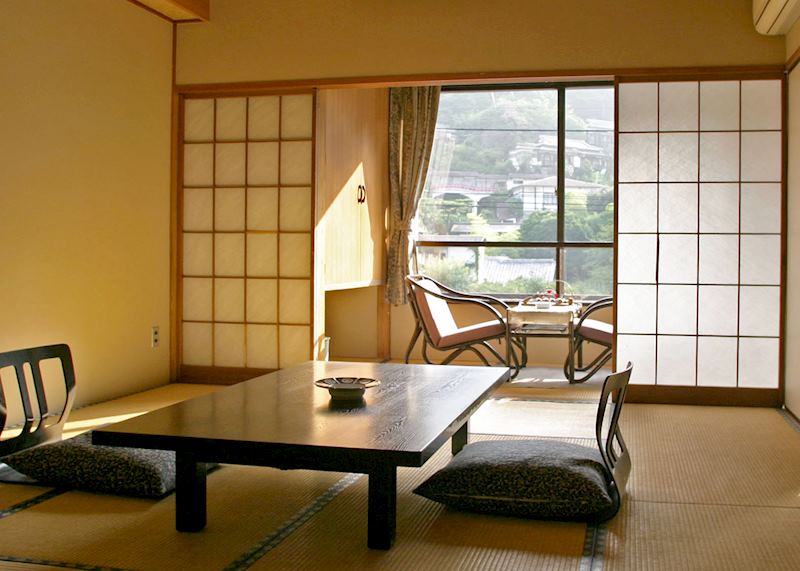
The bathroom is where modern and traditional really meet. There’s often a cedar bath, which emits a walk-through-the-forest scent once filled. The sink is likely to look like it’s straight out of a luxury hotel room. And, wherever you stay, the toilet will have more buttons than a remote control. Sleek wooden floors, black-beamed ceilings and bamboo-trimmed walls frame it all.
How do I check into a machiya?
Most machiya are managed by small companies that arrange bookings and ease your arrival. The only real challenge is that the buildings can be a little tricky to find, so I’d arrive by taxi.
Before you travel, we’ll give you a code for a key box at the property to let yourself in. Then, you’ll just need to phone the letting office from the property’s phone.
Shortly afterwards, someone will pop over to guide you around your new temporary home. They’ll show you how to pull out the futons, how the underfloor heating works, and which button flushes the toilet.
Given how much the Japanese love gadgetry, there are usually quite a few switches to get to grips with. But, from experience, they usually look far more complicated than they are.
Where do I eat?

Yes, machiya are self-catering properties, but I’d throw yourself into Japanese living headlong and eat out (there’s a reason machiya kitchens are so small).
Kyoto claims more than 100,000 restaurants and the second-most Michelin stars of any city in the world. For me, Japan’s culinary specialties are a highlight of any trip here.
It’s possible to arrange for bento box breakfast deliveries, but I can almost guarantee there’ll be a little café within walking distance, where you can try a traditional breakfast of rice and miso soup.
Read more about trips to Japan
Start thinking about your experience. These itineraries are simply suggestions for how you could enjoy some of the same experiences as our specialists. They're just for inspiration, because your trip will be created around your particular tastes.
View All Tours in Japan